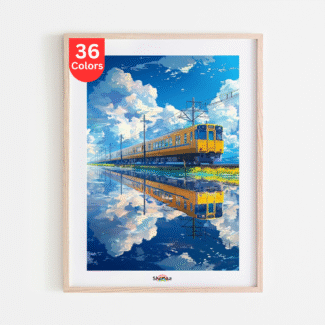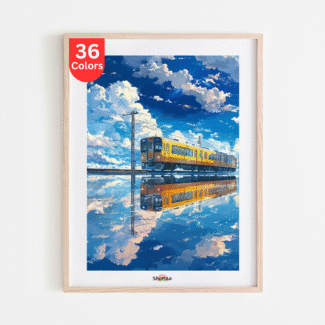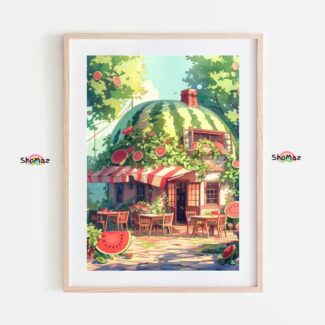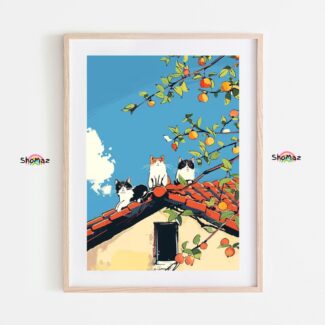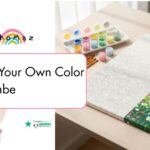Punch Needle Kits: The Complete Beginner-to-Pro Guide (Tools, Fabric, Patterns & Pro Tips)
If you’ve been craving a craft that’s calming, quick to learn, and seriously satisfying, punch needle kits deliver. With a simple tool, plush yarn, and the right foundation fabric, you’ll build richly textured art—wall hangings, cushions, coasters, mini rugs—at a pace that feels meditative and productive. This guide walks you through everything you need to start (and love) punch needle, including must-have materials, choosing the right kit, step-by-step technique, and expert troubleshooting.
Ready to explore kits and supplies? Browse curated options here: Shop punch-needle friendly kits & supplies →
What Is Punch Needle (and Why Everyone Loves It)
Punch needle is a fiber-art technique where you punch a threaded, hollow needle through cloth to create loops. Those loops pack together to form a plush, tufted surface on one side (the “loop side”) and a flatter, stitched look on the other (the “stitch side”). You can display either side depending on your style.
Why crafters are obsessed:
- Fast wins: you see progress with every punch—projects finish in hours, not weeks.
- Zen workflow: the repeating motion, soft yarn, and color play are soothing.
- Beginner-friendly: with the right foundation fabric and tool, it’s easy to learn.
- Stylish results: modern patterns, bold textures, and cozy, tactile décor.
What a Good Punch Needle Kit Includes
When you shop punch needle kits, look for components that make learning smooth and results long-lasting:
- Punch needle tool (ideally adjustable): lets you change loop height for sculpted texture (short for detail, long for plush).
- Foundation fabric: monk’s cloth (preferred), linen, or tightly woven cotton; the weave must grip loops securely.
- Hoop or frame: keeps fabric drum-tight so your loops seat evenly.
- Pre-measured yarn: wool, cotton, or acrylic in a palette that matches the pattern.
- Pattern or pre-printed design: removes guesswork and speeds setup.
- Clear instructions: threading, loop length, direction of travel, and finishing steps.
-
want a neatly curated path to everything you need? see the collection →
- Choosing the Right Punch Needle Kit for You
-
1) Skill level & project size
First project? Pick a small coaster, mini wall piece, or 15–20 cm hoop. You’ll finish faster and learn key mechanics without overwhelm. -
2) Fabric quality (non-negotiable)
Great foundations equal great loops. Monk’s cloth with a consistent weave grips loops best and resists pull-outs. -
3) Tool type
An adjustable punch needle lets you mix textures (think: ultra-plush clouds beside low-pile line work). If you’ll do multiple projects, it’s worth it. -
4) Yarn weight & fiber
Bulky yarn punches faster and looks plush; fine yarn gives detail. Wool feels luxe; cotton is sturdy and crisp; acrylic is budget-friendly and color-rich. -
5) Pattern personality
Modern geometrics, botanicals, pet portraits, abstract color blocks—choose what you’ll be excited to finish and display.
- How to Use a Punch Needle Kit (Step-by-Step)
-
Step 1: Prep and tension
Place your foundation fabric in a hoop or stretching frame and tighten until drum-taut. Re-tighten as you work—tension is everything. -
Step 2: Thread the needle
Feed yarn through the tool’s hollow shaft (use the included threader if provided) and out the needle’s eye. Leave a small tail. -
Step 3: Set loop length
If your tool is adjustable, set depth for your desired pile. Longer depth = higher, fluffier loops. -
Step 4: Punch with purpose
Hold the tool like a pen, bevel facing the direction you’re moving. Push the needle straight down until the stopper meets fabric; lift just enough to glide to the next hole; repeat in a steady rhythm. Keep the tool in contact with the fabric surface as you travel so loops don’t lift out. -
Step 5: Fill smart
Outline shapes first for crisp edges, then fill in rows like mowing a lawn. Don’t skip space—pack loops evenly so the surface looks full and lush. -
Step 6: Finish
Trim tails on the back, apply glue or fusible web if you want extra security, add a backing felt/canvas for rugs or pillows, or frame hoop pieces directly. -
tip: the fastest way to master the “feel” is to start small. grab a compact kit here: shop beginner-friendly options
- Pro Tips Most Beginners Don’t Hear (But Should)
- Punch straight down & up. Angled punches widen holes and loosen loops.
- Maintain hoop tension. If the fabric slackens, retighten—immediately.
- Mind your travel direction. Keep the tool’s bevel facing forward for clean seated loops.
- Don’t tug the yarn. Let it feed freely; resistance causes loop pull-outs.
- Blend loop heights. Use shorter loops for outlines/details, longer loops to sculpt clouds, florals, fur, or tufted motifs.
- Trim thoughtfully. Snip only tails; avoid trimming the loop tops unless you intentionally want a shear/cut-pile effect.
- Troubleshooting: Quick Fixes
- Loops fall out: foundation is too loose or weave too open; re-tighten fabric, switch to monk’s cloth, or punch denser.
- Gaps/see-through: add more rows—punch closer together; consider thicker yarn or a longer loop length.
- Yarn snags/tears fabric: yarn too thick for the needle or you’re punching at an angle; use appropriate needle size and go straight down.
- Uneven texture: inconsistent depth—set the same loop length and keep rhythm steady.
- Project Ideas You’ll Actually Finish
- Mini wall hoop with abstract color blocks (perfect first piece).
- Textured floral panel mixing low-pile outlines with high-pile petals.
- Coaster set for fast wins (and perfect gifting).
- Tuft-look cushion front in bold geometrics.
- Pet-portrait patch using sculpted loop heights for fur.
-
need yarn + foundation + tool in one go? browse curated kits & supplies
- Care & Display
- Block/steam lightly from the back to settle loops.
- Back it (felt or canvas) if the piece will be handled (coasters, cushions).
- Frame or hoop wall art; avoid direct sun to reduce fading.
- Spot clean only; for larger items, hand wash cold and lay flat to dry.
- Frequently Asked Questions
-
Is punch needle beginner-friendly?
Yes—if your fabric is tight and you use a compatible needle/yarn, the motion becomes intuitive quickly. -
How long does a project take?
Small hoops: 1–3 hours. Cushions/medium wall pieces: an evening or a weekend. -
What fabric is best?
Monk’s cloth is the classic for loop retention and smooth punching. Linen and some tightly woven cottons can work if the weave grips loops well. -
Will my loops unravel?
Dense packing + the right foundation prevents pull-outs. For extra security, add fabric glue or fusible web to the back before finishing.
- Final Take
- Punch needle kits merge everything makers love: tactile texture, fast progress, and a calming, creative ritual. Start with a small, well-curated kit, learn the rhythm, then scale up to plush cushions and gallery-worthy wall art. Your space (and stress levels) will thank you.
- Start your first (or next) project here → Shop punch-needle friendly kits & supplies

